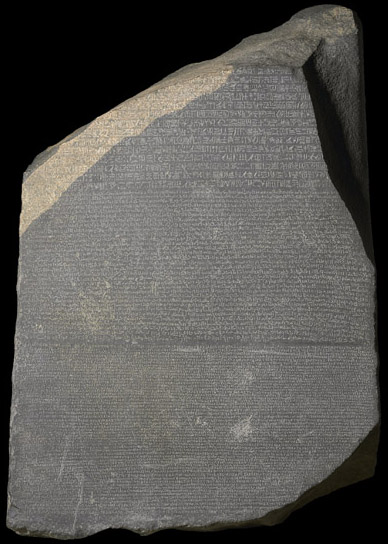Artwork Analysis HOA 211 BV: The Rosetta Stone
The Rosetta Stone was discovered in 1799. This is a piece of history to acknowledge because this was the bridge between languages with ancient Egyptian writing. Ancient Egyptian art is the type of art not intended to be seen. That is at least what we believe. What makes this piece interesting and important is that because of the discovery of this piece it has allowed researchers to translate one message through three different languages. Based on information provided, " Soon after the end of the fourth century C.E., when hieroglyphs had gone out of use, the knowledge of how to read and write them disappeared." After 1400 years in the nineteenth century scholars were able to use Greek inscriptions as a key to decipher the writings on the stone. With the capability of being able to translate scriptures used back in 332 B.C.E. leaves us with being able to potentially discover more about Egyptian art. The Rosetta stone was made during the Hellenistic period and is believed to have been originally displayed within a temple. The purpose of the Rosetta stone was originally designed to re-establish the rule of Ptolemaic kings over Egypt. Unlike Assyrian art where they used artwork to decorate walls with images of the king or about war, Egyptian art does not signify the same things. Though the Egyptian kingdom and Assyrian Empire shared land there are clear differences within their cultures. Egyptian religion is a major factor to the Rosetta stone. Egyptian people believe that a god they called Horus, had bestowed the throne to a human king. This is important because in Egypt their writing was religious texts. This has me believe that hieroglyphics were kept so secret during that time to where only Priests and the king were able to understand. Since the discovery of the Rosetta stone in 1799 by Napoleon’s army, then kept in possession of the British museum in 1802. This discovery and the writing translated from the hieroglyphics themselves are not what make this important. The idea that even with writing found so long ago, we are able to bridge a gap between languages to more discoveries in the future.

The British Museum, "The Rosetta Stone," in Smarthistory, August 29, 2016, accessed September 1, 2020, https://smarthistory.org/the-rosetta-stone/.
Comments
Post a Comment